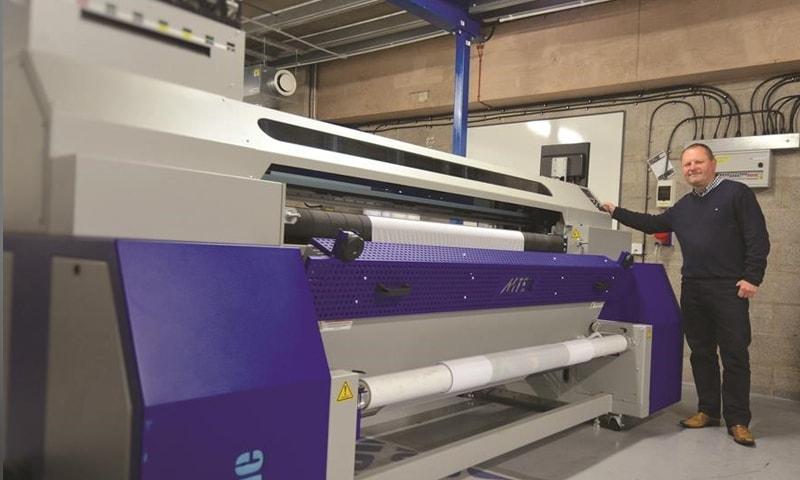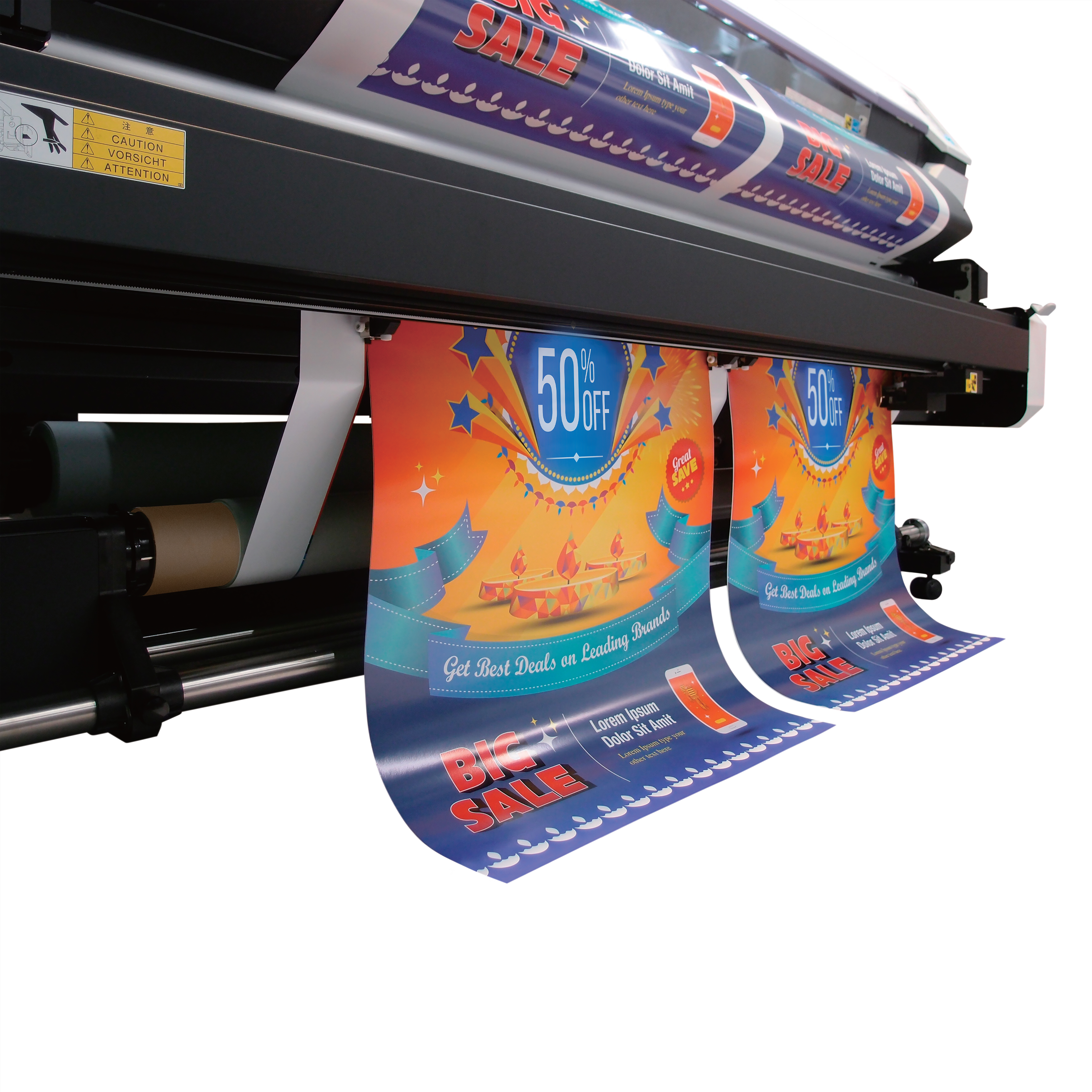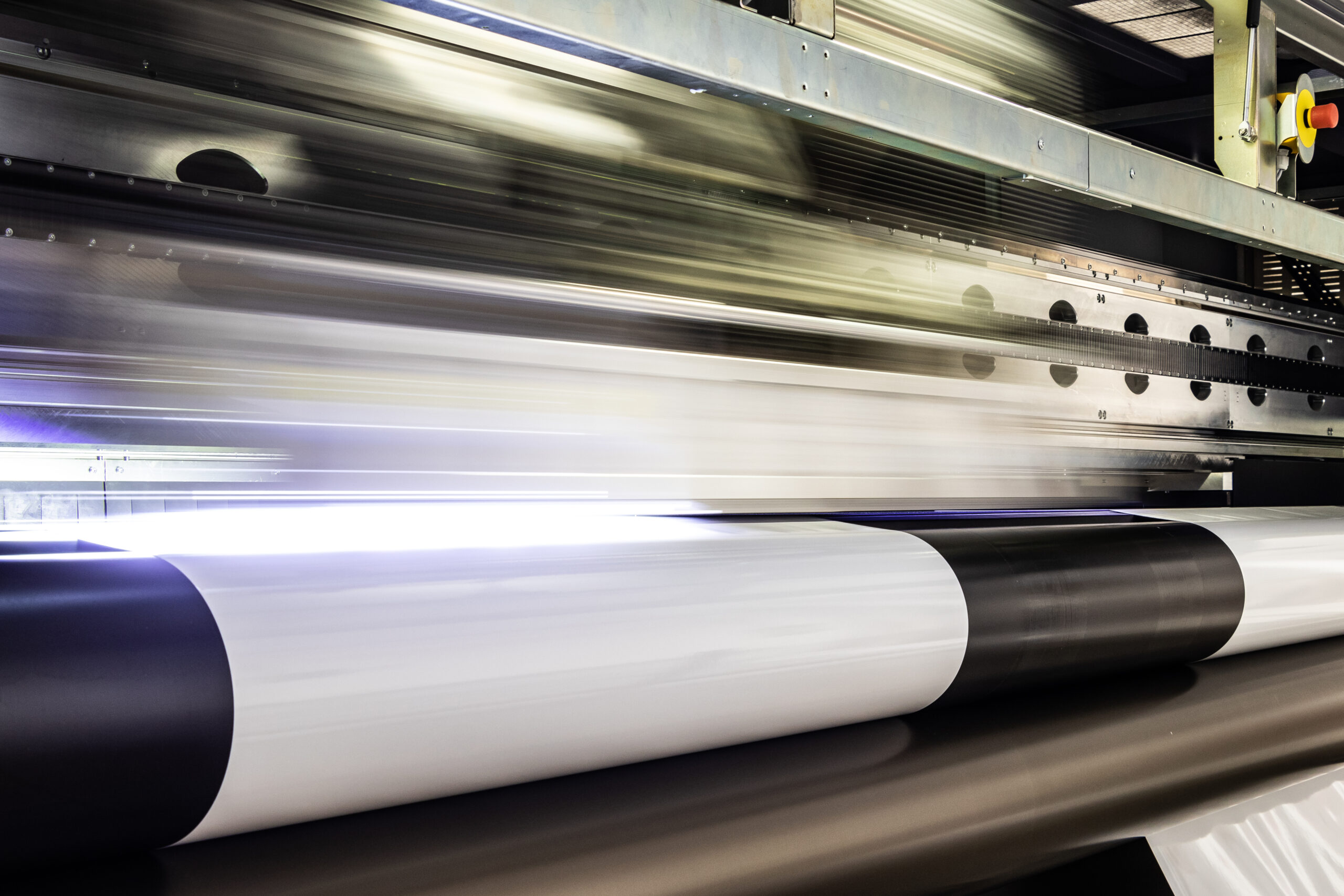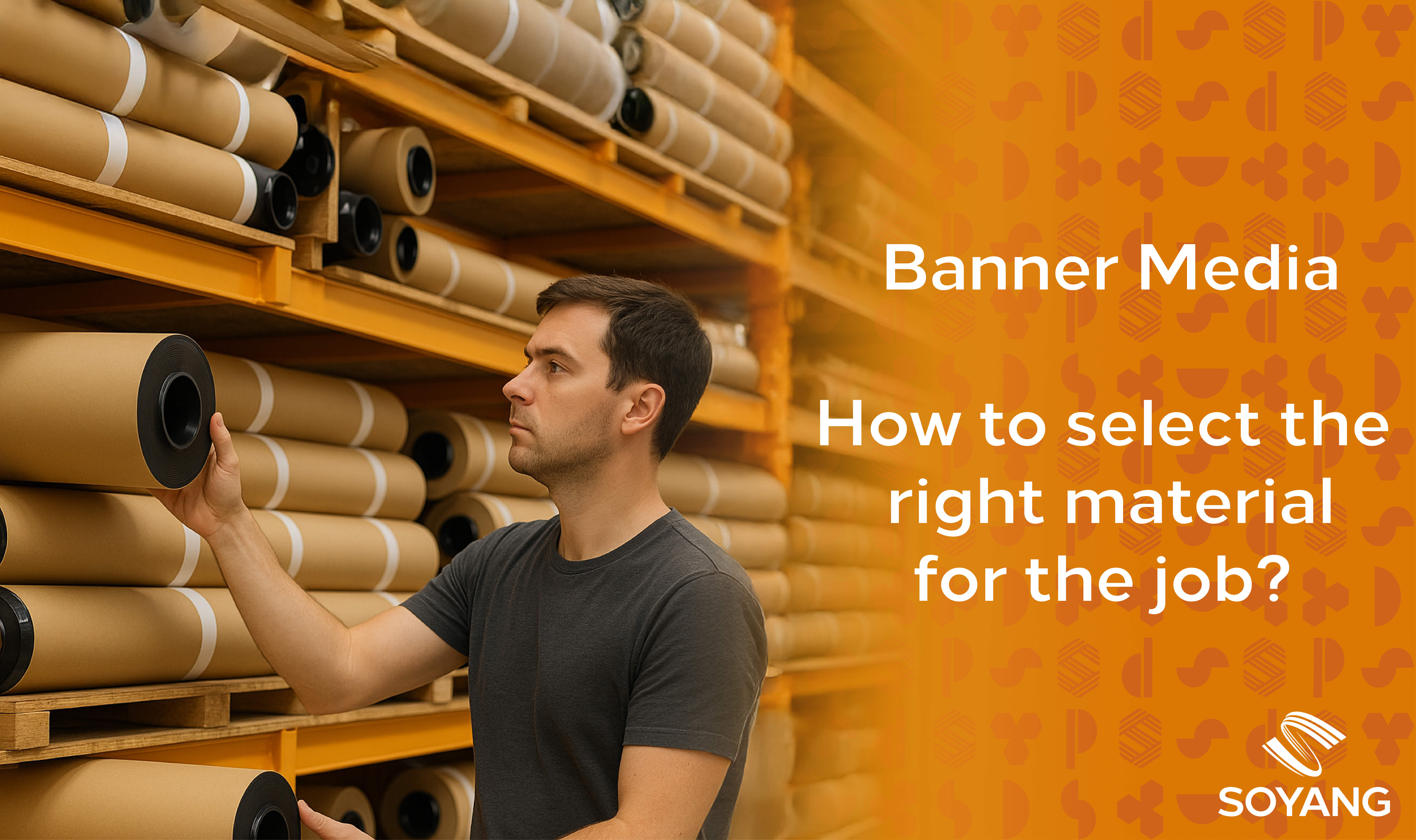Finding the right inkjet print solution is all about finding out what material you are printing on, what you want printed and where it will be installed. It’s more than just good looks and capability. It can be challenging, but this guide to large format inkjet printing can help you identify what large format printer technology and ink options are available.
When and Where to Use a Wide Format Inkjet Printing
The required print job will often dictate the kind of printer you will need. The primary reason for using a large format or wide format inkjet printer can vary, but may include;
- Advertising hoardings
- Art prints
- Banners
- Fabrics
- Floor covering
- Photography
- Retail signs
- Soft signage
- Tradeshow displays
- Textiles
- Vehicle wraps
- Vinyl prints
- Wall coverings / Wallpaper
Digital Inkjet Printing Technology
Large format inkjet printers are used to produce a wide range of interior and exterior printed products. It uses piezoelectric print heads to fire tiny droplets of ink onto the substrate which is then either bonded or cured depending on the type of ink used.
What type of inkjet printer?
Large format Inkjet printers range from Roll-to-roll, Flatbed and Hybrid printer options. Choosing the best printer will depend on what print substrate is being used and for what purpose or environmental setting it will be used for.
Roll-to-Roll Printers
A Roll-to-roll printer, as the name suggests means that the flexible substrate material (paper, vinyl, textile etc) is fed into the printer on a roll. The printheads then create the desired graphics as the material winds, or rolls out. This makes them ideal for banners, signage, posters, wallpapers and a whole host of other flexible media, both commercial and bespoke.
Ideal for:
- Wall coverings
- Banners
- Soft signage
- Vinyl wraps and decals
Flatbed Printers
Flatbed printers are usually able to print on sheets of rigid and flexible material, often over 5cm thick. A vacuum clamp holds down the substrate material tightly enabling the print heads to pass over it and lay down the ink. It makes for an exacting and precise printing process on materials as diverse as wood, plastic, foamboard, metal and glass.
Ideal for:
- Glass printing
- Rigid board (foamboard etc.)
- PVC
Hybrid Printers
A hybrid printer is capable of printing as either a Flatbed or Roll-to-roll. It can offer some flexibility when applying prints to a wide range of different materials. Having a hybrid printer can enable changeover print runs for different applications on the same printer rather than employing two different printers or where space and cost are limited.
Ideal for:
- Multiple-use printshops
- Multi-runs of interchangeable materials
What type of ink?
There are a number of inks that can be used and all of them have their benefits which we will explore in more detail here:
Solvent Inks
Solvent inks are relatively inexpensive in ink terms but because they are solvent-based (meaning they contain petroleum chemicals like acetone) they require longer periods of exposure to cure. However, this makes them both exceptionally waterproof and hardwearing.
Printing using solvent inks is also ideal for printing on uncoated surfaces like vinyl, film and commercial banner material. However additional ventilation is often required during the curing phase. It’s also reassuring to know that eco-solvents are becoming more common, slowly eliminating the number of volatile organic compounds (VOCs) contained in the ink.
Aqueous (water-based) Inks
Aqueous inks use a mix of water, colour pigments and glycol to produce a vivid colour range. Because they are water based they are not entirely waterproof and therefore may require some degree of over-lamination to protect the surface from weathering and bleaching, especially in outdoor environments.
Latex inks are classified as aqueous as they are 70% water, but due to their flexibility and the ease of over-lamination, this does not limit their appeal for small and large scale f;lexible print projects both inside and outside. They are widely considered more environmentally friendly because of this but high levels of heat are still needed to dry the ink.
UV inks
UV inks are cured using UV lamps. They are typically made using acrylic monomers and exposure to strong UV light cures the ink hard. Because of this, UV printing is a popular choice for multiple print runs and they are suitable to a wide range of substrate material. This quick set time and the development of low temperature UV lamps have meant that they are one of the safest and environmentally friendly print technologies.
Additional Features When Considering Inkjet Printing
Speed
Capacity and speed are two of the most important aspects of choosing between inkjet printing technologies. Can it handle bespoke rush jobs or is it more suited to continuous repeat print runs?
Digital interface
All modern large format inkjet printers are utilising digital and touchscreen compatibility so when print jobs are sent through they can be uploaded seamlessly without having to go through lengthy mockups and multiple print approvals.
Environmentally friendly?
All types of large format and wide format printing have an environmental impact, but they are becoming less harmful with each new iteration of ink technology. Even solvent inks are now able to offer eco-solvent products containing less harmful VOCs. UV radiation inks are now being used with low temperature lamps and most water-based inks are using significantly less ink than their counterparts already, counteracting the increased heat required to dry.
Conclusion
Choosing your large format inkjet printing requirements can be a complicated journey. After carefully considering your printing needs it will become easier to understand what type of printer technology can best handle it, whether this is Roll-to-roll or Flatbed printer.
Then there are the ink considerations, should you choose solvent, UV or latex? Every different type of ink has different properties and benefits. Consider the print setting, type of material being used and the size of the print run to match best to your needs.







